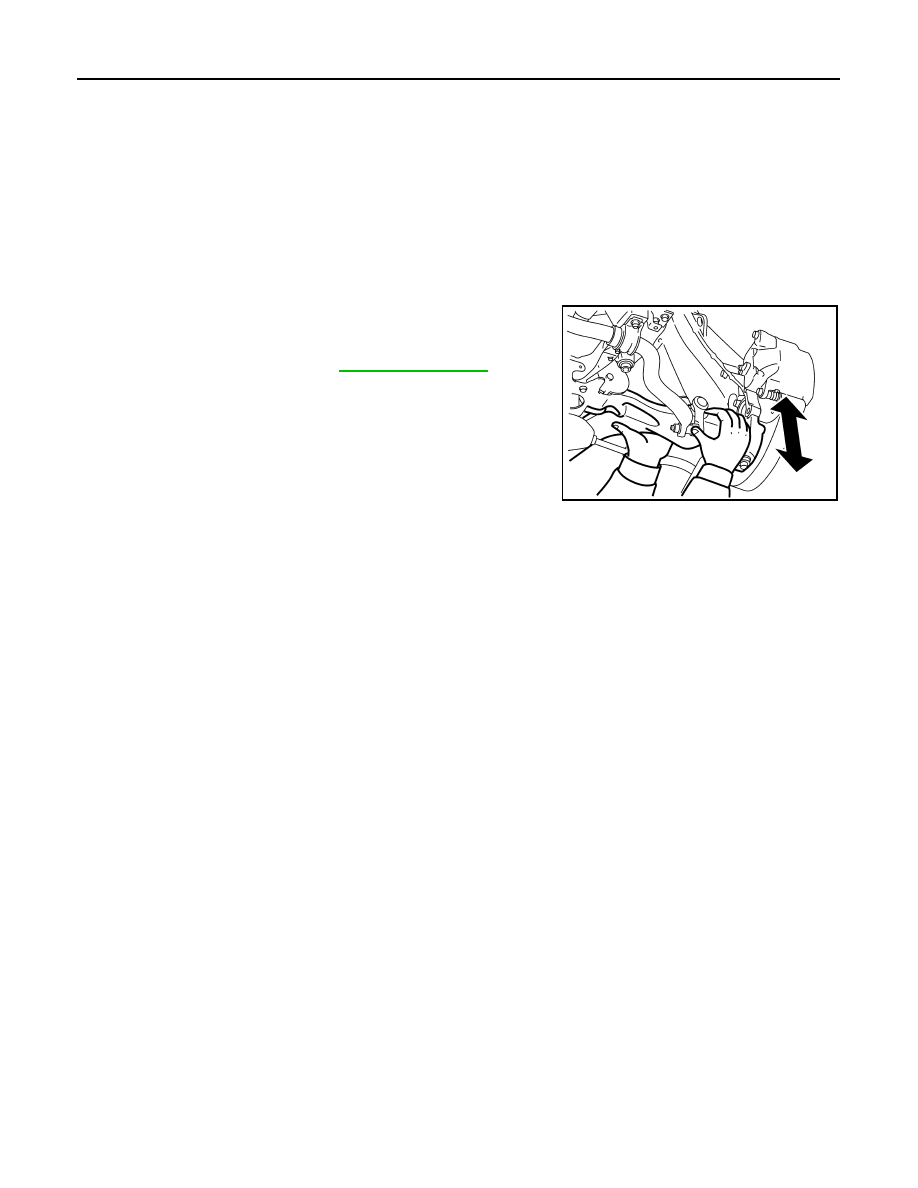Nissan Cube. Manual - part 503

FSU-6
< PERIODIC MAINTENANCE >
FRONT SUSPENSION ASSEMBLY
PERIODIC MAINTENANCE
FRONT SUSPENSION ASSEMBLY
Inspection
INFOID:0000000009948818
COMPONENT PART
Check the mounting conditions (looseness, backlash) of each component and component conditions (wear,
damage) are normal.
Ball Joint Axial End Play
1.
Set front wheels in a straight-ahead position.
2.
Move axle side of transverse link in the axial direction by hand.
Check there is no end play.
CAUTION:
• Never depress brake pedal when measuring.
• Never perform with tires on level ground.
• Be careful not to damage ball joint boot. Never damage
the installation position by applying excessive force.
STRUT ASSEMBLY
Check for oil leakage, damage, and replace if necessary.
Axial end play
: Refer to
JSEIA0444ZZ